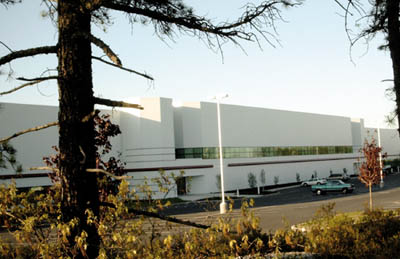
It’s the economy, stupid. No, wait a minute. It’s food safety, stupid. Regardless of your point of view on the current challenges facing the food industry, most food and beverage companies are keeping their wallets close to the vest when budgeting new plant construction projects. According toFood Engineering’s annual plant construction survey, most of the money is going to expansion and renovation projects. In an uncertain economy, food manufacturers continue to keep a watchful eye on food safety, plant security and clean, flexible designs.
FE’s annual plant construction survey is nearly flat compared to last year. This year we uncovered 178 new projects and 353 renovations/expansions either completed, planned or underway in 2002 for a total of 531 projects. In the previous year’s survey, FE uncovered 168 new plants and 357 expansion/renovation projects for a total of 525.
In today’s volatile economy, food plants are “focusing on the bottom line more than ever,” says Robert Graham, vice president of The Austin Company’s food and beverage group. As a result, says Graham, food and beverage companies are taking advantage of services such as up-front strategic planning and ROI analyses to help justify projects.
According to Darryl Wernimont, director with the Haskell Company, industry studies have shown that there are benefits involving cost, schedule and overall quality when implementing a design-build process. However Wernimont cautions, simply calling a delivery process design-build does not mean you will garner cost savings. “Design-build should be viewed not as a delivery category but rather as a delivery process.” Wernimont suggests getting all parts of the plant and the project team working in synch to achieve the best results.
Cost savings can also come from different points in the supply chain. Logistics networks can be reconfigured to save money and increase plant optimization. According to Shane Bolding, business development manager of Suitt Construction Company, many plants are now using existing facilities and personnel to roll out new product lines before going forward with capital expenditures on greenfield sites. This trend is confirmed by FE’s stats that show expansion/renovation projects outnumber greenfield by two to one.

Show me the money
Rapidly changing technologies, cost cutting initiatives and a competitive environment in the food industry are making many processors turn to automation to achieve increased optimization.Automation ultimately reduces labor costs, says Graham, and has become an overriding consideration when designing food processing workflow.
Joe A. Shaffer, president of Facilities Design Inc., advises food and beverage companies to revisit technologies such as automated material handling, robotics, and warehouse management systems. “The costs of these have come down, while labor costs rise, providing a better return on investment than in the past,” Shaffer said.
Every plant is aware of the need and importance of an effective HACCP plan. This coupled with the declining cost of process controls and the use of novel techniques such as vision systems, motion control and robotics have resulted in greater utilization of control technology on production lines, says Karl Landgraf, project manager for The Dennis Group.
With all the pressure on plant operations to keep costs down, food companies have never lost site of their responsibility to produce a safe food supply.
“Food safety has emerged as one of the most pervasive considerations affecting both the construction and/or rehabilitation of food manufacturing plants today,” says Andrea Velasquez, vice president, A. Epstein and Sons International Inc.
With recent world events increasing the threat of potential terrorism, both government agencies and food manufacturers have stepped up activity to protect the food supply.

While food safety was also a hot topic in last year’s plant construction survey, only a few of our respondents indicated that plant security issues were a main concern in the past. What a difference a year makes.
This year food plants are expressing an increased interest in physical plant security. “Food manufacturers are implementing ‘rings of security’—an approach designed to identify security issues and build a strategy to respond to them,” said Graham. For example, facilities are being built with conduit and power to supply security equipment, giving manufacturers the flexibility to purchase actual equipment at a later date, thus delaying the investment of value capital and increasing cash flow.
Shaffer concurs. “Smaller food companies are implementing security procedures they did not need before, including limited access to the property through control points and card access into the facilities as well as badges for employees and visitors.”
Wernimont also sees an increased emphasis on the overall industrial campus, the physical flow through the facility and the general infrastructure (employee parking, visitor parking, shipping and receiving), so that security control and monitoring is optimized.

In the offing
Technologies such as irradiation and post pasteurization are among the tools that will take food processing and food safety to a new level.Post pasteurization is a process that is being demanded by more and more food manufacturers, says Scott Pribula, vice president, Stahlman Engineering Corp. “This process gives another reassurance that bacteria has been killed before product is put in the box,” he said. These units were not a part of process lines five years ago and require extensive infrastructure to operate, Pribula said.
Velasquez says processes such as irradiation affect layout, material handling and safety issues in designing and constructing new facilities. “Processes formerly not used may now be integrated in the manufacturing and packaging of certain food items. These processes must now be built into the overall design of a facility,” she said.”

Jeff Jendryk, vice president of McClier’s food and beverage group adds that many smaller projects are focusing on plant operations and flexibility of new packaging lines. However in today’s economy, mega-projects are highly unlikely as clients are conserving capital budgets until things pick up, Jendryk concludes.
Click here to view the survey results.
The following companies assisted Food Engineering in compiling this survey:
The Austin CompanyKathleen M. Bast
440-544-2684
E.A. Bonelli & Associates
Clare Tobias
510-740-0155
The Dennis Group
Karl Landgraf
760-230-1459
E2 M
Francis W. Skwira
770-449-7383
ext. 251
A. Epstein and Sons International, Inc.
Andrea Velasquez
312-429-8007
Facilities Design, Inc.
Joe A. Shaffer
717-285-9442
The Facility Group
Tiffany Baxter
770-437-2697
Fluor Corporation
Tucker M. Maloney
864-281-8324
Gleeson Constructors, Inc.
Ronald L. Rens
712-258-9300
The Haskell Company
Darryl Wernimont
904-357-4820
Hendon & Redmond
Ted Montag
513-641-0320
Hixson
Steve Schlegal
513-241-1230
McClier
Jeffrey P. Jendryk
312-373-7700
Memphis Regional Chamber
Tom Chamberland
901-543-3500
Seiberling Associates Inc.
John Miller
614-764-2817
Stahlman Engineering
Scott Pribula
603-526-2585
The Stellar Group
Joe Bove
904-260-2900
St. Onge, Ruff & Associates
David Cooksey
717-854-3861
Suitt Construction Company, Inc.
Carolyn G. Root
864-250-5902
Vaughn, Coltrane, Pharr & Associates
Charles Gabriel
770-938-2600
Westra Construction, Inc.
Peter G. Roehrig
920-324-3545 ext. 149
Conway Data
770-325-3422

